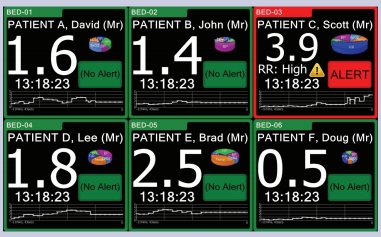
Full Answer
What is Orbactiv used for?
ORBACTIV® MOA Single-dose ORBACTIV® is an alternative to a multiple dose vancomycin course of therapy for Acute Bacterial Skin and Skin Structure Infections (ABSSSI) caused or suspected to be caused by indicated pathogens in adult patients.
How do you administer Orbactiv?
The recommended dosage of ORBACTIV is 1,200 mg administered as a single dose by intravenous infusion over 3 hours in patients 18 years and older [see Warnings and Precautions (5.3)].
How much does Orbactiv cost?
The cost for Orbactiv intravenous powder for injection 400 mg is around $3,467 for a supply of 3 powder for injection, depending on the pharmacy you visit. Prices are for cash paying customers only and are not valid with insurance plans.
What is the difference between Kimyrsa and Orbactiv?
Kimyrsa is a single-dose, long-acting lipoglycopeptide intravenous (IV) antibiotic. It is infused over 1 hour. IV oritavancin is also available under the brand name Orbactiv®, but that formulation requires an infusion over 3 hours. Orbactiv and Kimyrsa share the same indication.
How is Dalvance administered?
DALVANCE is administered via intravenous infusion, using a total infusion time of 30 minutes to minimize the risk of infusion-related reactions. Rapid intravenous infusions of DALVANCE can cause reactions that resemble “Red-Man Syndrome,” including flushing of the upper body, urticaria, pruritus, and/or rash.
How often do you give dalbavancin?
The dose of dalbavancin is 1000 mg given intravenously over 30 min followed by 500 mg one week later, or as a single dose of 1500 mg [10].
What type of antibiotic is oritavancin?
Oritavancin is in a class of medications called lipoglycopeptide antibiotics. It works by killing bacteria. Antibiotics such as oritavancin will not work for colds, flu, and other viral infections.
How long does oritavancin last?
Pharmacokinetics and Pharmacodynamics Oritavancin displays linear pharmacokinetics when administered at intravenous (IV) doses ranging from 0.02 to 10 mg/kg. It is bound to approximately 85% of human proteins. Based on population kinetics, the half-life of oritavancin is 393 hours, allowing for a single-dose strategy.
Why is Orbactiv used?
To reduce the development of drug-resistant bacteria and maintain the effectiveness of ORBACTIV® and other antibacterial drugs, ORBACTIV® should be used only to treat or prevent infections that are proven or strongly suspected to be caused by susceptible bacteria.
What are the side effects of Orbactiv?
The most common adverse reactions (≥3%) in patients treated with ORBACTIV® were headache, nausea, vomiting, limb and subcutaneous abscesses, and diarrhea. ORBACTIV® (oritavancin) is indicated for the treatment of adult patients with acute bacterial skin and skin structure infections (ABSSSIs) caused or suspected to be caused by susceptible isolates ...
How long does Orbactiv prolong aptt?
Coagulation test interference: ORBACTIV® has been shown to artificially prolong aPTT for up to 120 hours, and may prolong PT and INR for up to 12 hours, and ACT for up to 24 hours. ORBACTIV® has also been shown to elevate D-dimer concentrations up to 72 hours.
Contraindications
Use of intravenous unfractionated heparin sodium is contraindicated for 120 hours (5 days) after ORBACTIV® administration because the activated partial thromboplastin time (aPTT) test results are expected to remain falsely elevated for approximately 120 hours (5 days) after ORBACTIV® administration.
Warnings and Precautions
Coagulation test interference: ORBACTIV® has been shown to artificially prolong aPTT for up to 120 hours, and may prolong PT and INR for up to 12 hours, and ACT for up to 24 hours. ORBACTIV® has also been shown to elevate D-dimer concentrations up to 72 hours.
Adverse Reactions
The most common adverse reactions (≥3%) in patients treated with ORBACTIV® were headache, nausea, vomiting, limb and subcutaneous abscesses, and diarrhea.
What is Orbactiv used for?
Orbactiv (oritavancin) is a member of the glycopeptide antibiotics drug class and is commonly used for Skin and Structure Infection.
How much does a free drug card save?
The free Drugs.com Discount Card works like a coupon and can save you up to 80% or more off the cost of prescription medicines, over-the-counter drugs and pet prescriptions.
Is Orbactiv a generic?
Orbactiv is available as a brand name drug only, a generic version is not yet available. For more information, read about generic Orbactiv availability . This Orbactiv price guide is based on using the Drugs.com discount card which is accepted at most U.S. pharmacies.
Contraindications
Use of intravenous unfractionated heparin sodium is contraindicated for 120 hours (5 days) after ORBACTIV® administration because the activated partial thromboplastin time (aPTT) test results are expected to remain falsely elevated for approximately 120 hours (5 days) after ORBACTIV® administration.
Warnings and Precautions
Coagulation test interference: ORBACTIV® has been shown to artificially prolong aPTT for up to 120 hours, and may prolong PT and INR for up to 12 hours, and ACT for up to 24 hours. ORBACTIV® has also been shown to elevate D-dimer concentrations up to 72 hours.
Adverse Reactions
The most common adverse reactions (≥3%) in patients treated with ORBACTIV® were headache, nausea, vomiting, limb and subcutaneous abscesses, and diarrhea.
Contraindications
Use of intravenous unfractionated heparin sodium is contraindicated for 120 hours (5 days) after ORBACTIV® administration because the activated partial thromboplastin time (aPTT) test results are expected to remain falsely elevated for approximately 120 hours (5 days) after ORBACTIV® administration.
Warnings and Precautions
Coagulation test interference: ORBACTIV® has been shown to artificially prolong aPTT for up to 120 hours, and may prolong PT and INR for up to 12 hours, and ACT for up to 24 hours. ORBACTIV® has also been shown to elevate D-dimer concentrations up to 72 hours.
Adverse Reactions
The most common adverse reactions (≥3%) in patients treated with ORBACTIV® were headache, nausea, vomiting, limb and subcutaneous abscesses, and diarrhea.
